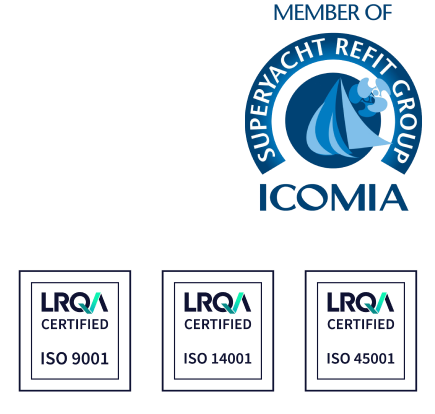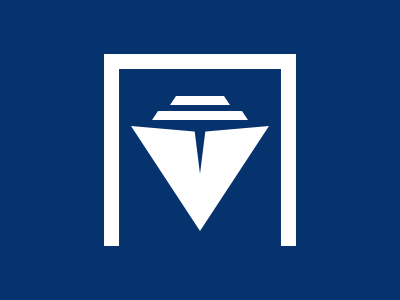If you’ve ever been involved in the design, construction, operation, or refit of a yacht, you’ve probably come across the phrase “classed by” followed by a name like Lloyd’s Register, RINA, or ABS. This refers to a Classification Society, a term that may sound formal and administrative, but in reality, touches nearly every corner of a yacht’s safety, structure, and compliance.
Understanding what a Classification Society is, and why it matters, can help everyone from owners and crew to yacht managers and refit specialists navigate the regulatory and technical side of yachting with much more confidence.
Why Classification Societies Matter
Every yacht, especially those over a certain size or operating commercially, must meet a series of rules and standards that ensure it is safe, seaworthy, and technically sound. These standards are not set arbitrarily, they come from organizations known as Classification Societies.
They’re not government bodies, but they work closely with flag states, insurers, and shipyards to establish and verify the rules a vessel must follow. A yacht that’s “in class” is one that meets these rigorous criteria, and keeping a yacht in class is often required for charter operations, insurance coverage, and port access.
What is a Classification Society?
A Classification Society is an independent, non-governmental organization that establishes and enforces standards for the design, construction, and maintenance of ships and yachts. These standards are referred to as “class rules.”
When a vessel is built or refitted under class, it means that the Classification Society has:
-
Approved its design drawings
-
Inspected its construction or refit work
-
Verified its materials, systems, and structures
-
Issued a certificate confirming it is “in class”
Some of the most well-known Classification Societies include:
-
Lloyd’s Register (UK)
-
RINA (Italy)
-
DNV (Norway)
-
Bureau Veritas (France)
Each one has slightly different rules, but they all aim to ensure the vessel is built and maintained to a high technical standard.
Common Misunderstandings
A Classification Society is not the same as a flag state, which is the country where a yacht is registered. Flag states handle legal compliance, such as safety codes, manning, and commercial operations. Classification Societies deal with the technical and structural integrity of the yacht.
It’s also worth noting that not all yachts are required to be classed. Private yachts under a certain size may choose not to, but commercial yachts (or those entering certain ports or markets) will almost always need to be classed.
Where Classification Is Used in Yachting
Classification touches many areas of yacht operation and management, including:
-
New builds: Class societies approve the design, inspect the construction, and issue the initial class certificate.
-
Major refits: Any significant structural or systems work must be reviewed and approved to maintain class status.
-
Surveys and inspections: Periodic class surveys are required to keep the yacht in compliance.
-
Commercial operations: Class is often mandatory for yachts operating charters or carrying passengers for hire.
-
Insurance: Many underwriters require vessels to be classed to issue or renew policies.
For captains, engineers, and management teams, maintaining class can influence everything from maintenance schedules to budget planning. Missing a required survey or making unapproved modifications can result in a yacht falling “out of class,” which has serious operational and legal consequences.
How It Works in Practice
Here’s a simplified view of how a Classification Society interacts with a yacht:
-
Design phase: Plans are submitted to the Classification Society for review and approval.
-
Construction or refit: Surveyors attend the build or refit site at key stages to inspect materials, workmanship, and system installation.
-
Certification: Once completed and approved, a Certificate of Class is issued.
-
Ongoing compliance: The yacht must undergo annual, intermediate, and special surveys to maintain its classification status.
If the yacht fails a survey or skips required checks, it may lose its class certification until corrective work is done.
Who Should Pay Attention to Classification?
-
Yacht owners who want to maintain resale value or enter the charter market
-
Captains and engineers who are responsible for technical compliance and maintenance
-
Yacht managers and brokers involved in sales, charters, and insurance
-
Refit specialists who need to coordinate approved structural and systems work
Being “in class” isn’t just about paperwork. It’s about maintaining technical integrity, safety, and global mobility for the yacht.
Classification Societies may not be front-of-mind when you step aboard a beautifully finished yacht, but they work behind the scenes to ensure that vessel is safe, compliant, and respected worldwide. Understanding how class works (and who sets the rules) helps everyone in yachting make smarter, safer decisions.
FAQs: Classification Societies in Yachting
Does my yacht need to be classed if it’s only used privately?
Not necessarily. Private yachts under 24 meters often operate without class certification. However, if your yacht is larger, crosses international waters, or may enter commercial chartering in the future, choosing to class it can provide added safety assurance, value, and operational flexibility.
What happens if a yacht falls out of class?
Losing class status can invalidate insurance, charter licenses, and port access, especially for commercial yachts. To regain class, the yacht will need to undergo inspection, correct any deficiencies, and pass required surveys.
Can I change from one Classification Society to another?
Yes, it is possible to transfer class between societies, though it requires formal review. The new society will typically assess past records and may request additional inspections to ensure the yacht meets its standards.
Is class certification the same across all Classification Societies?
Not quite. While many standards are similar, each society has its own rule sets, documentation requirements, and survey procedures. It’s important to understand the specific rules of the society you’re working with, especially during refits or modifications.
How do class surveys affect yacht refits?
If your yacht is classed, any structural or system modifications during a refit may need to be reviewed and approved by your Classification Society. Failing to do so could risk non-compliance, especially when surveyed afterward.
Does classification cover only structural elements?
No, it extends to many technical systems, including propulsion, fire safety, electrical systems, steering, and stability. Class rules are comprehensive and aim to ensure the yacht is safe and reliable in all key areas.
How often are class surveys required?
Classed yachts must undergo annual surveys, as well as more in-depth intermediate (typically every 2-3 years) and special surveys (usually every 5 years). These surveys help verify the yacht continues to meet safety and technical standards.
Is class required for chartering in all countries?
Many flag states and charter markets require yachts to be classed to operate commercially, especially in Europe and the U.S. Even if not legally required in all regions, many charter clients and insurers expect it as a standard of quality and compliance.








